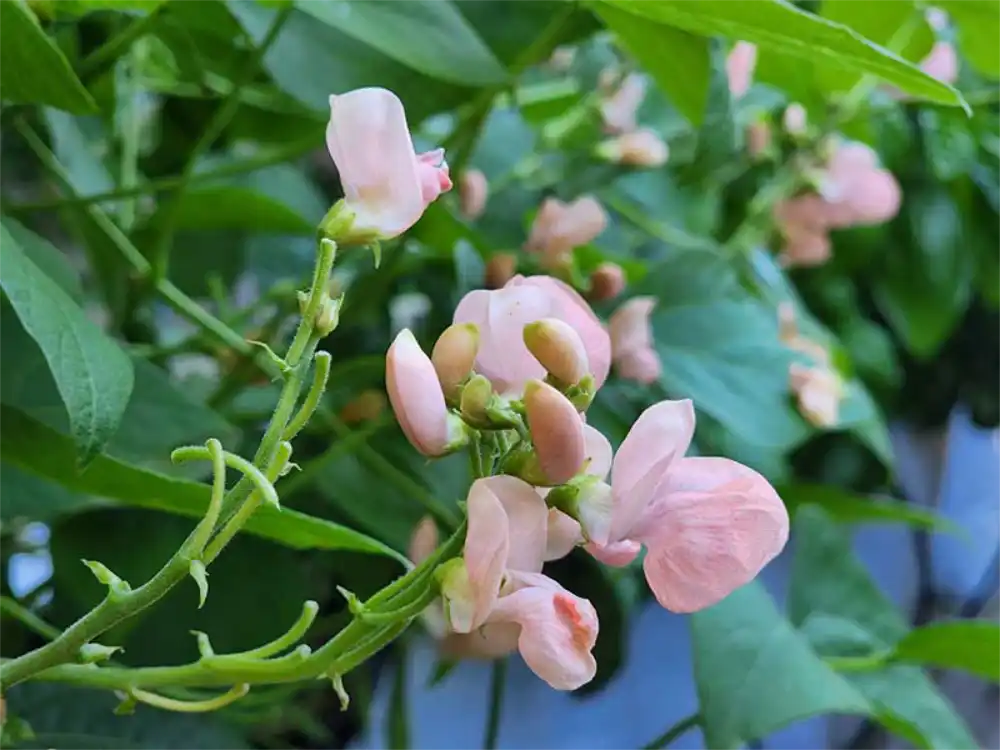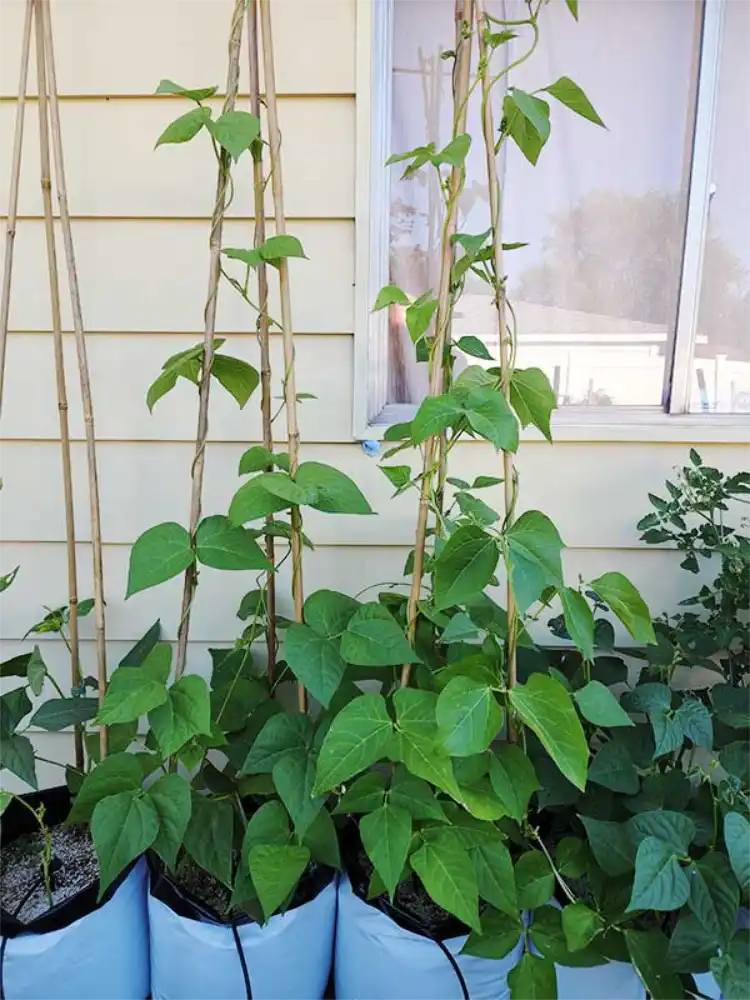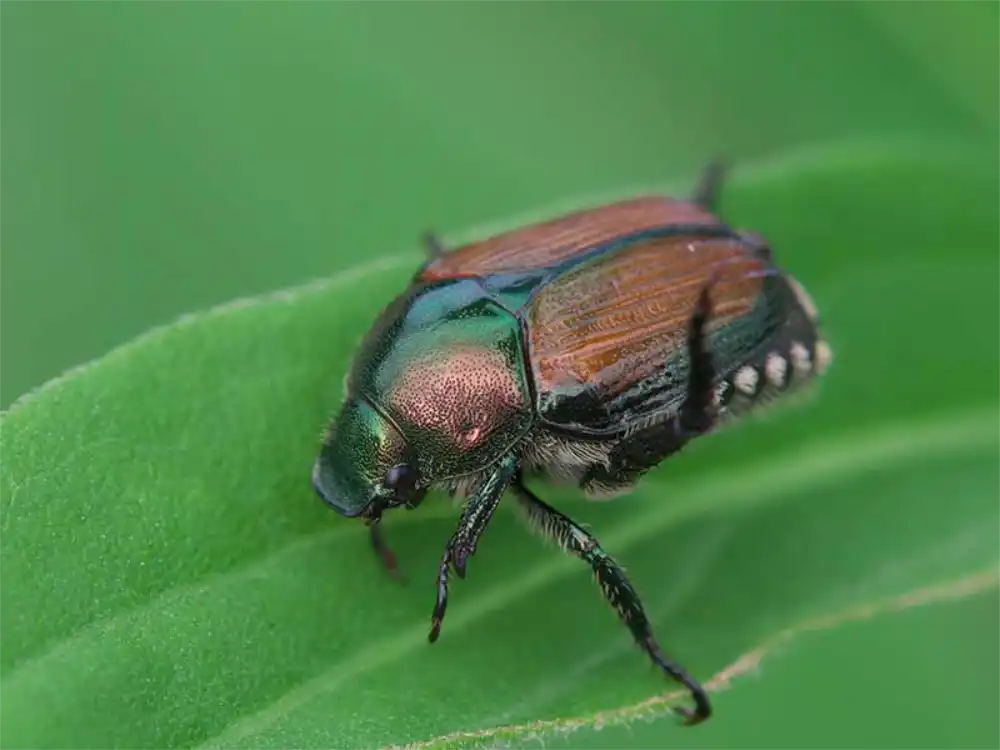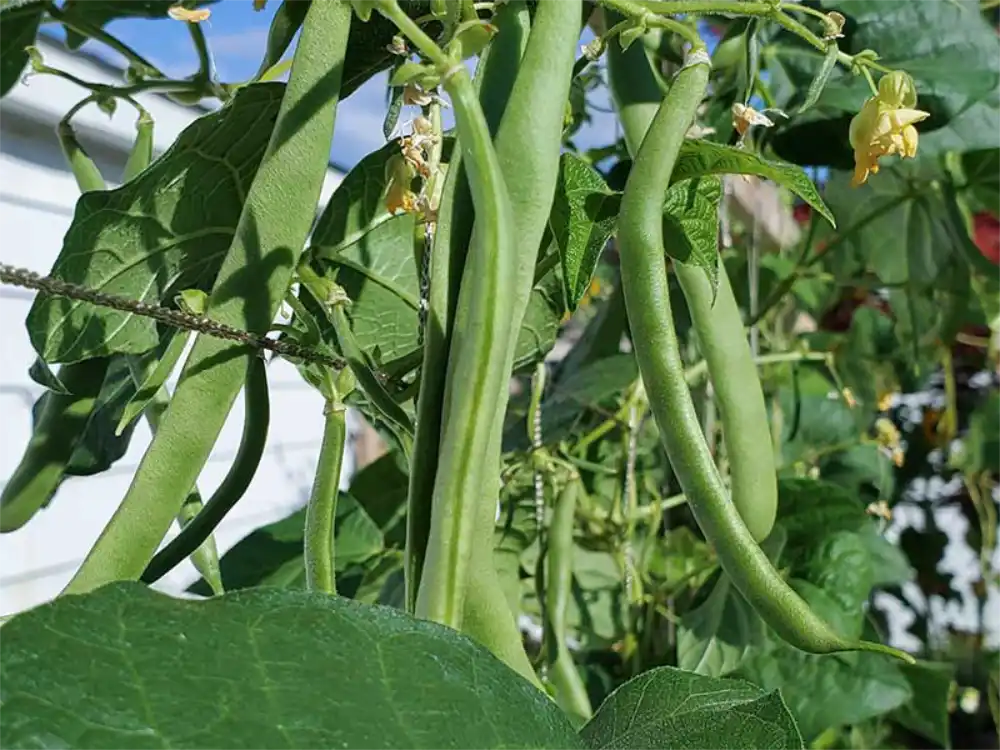Growing beans in containers is a great way to have fresh, delicious, and nutritious produce at your fingertips. With the right container, soil, and care, you can enjoy a bountiful harvest of beans, even if you don’t have a lot of space in your yard. In this article, we’ll explore the steps you need to follow to grow beans in containers, from choosing the right container to harvesting your crop.
Why Grow Beans in Containers?
There are several reasons why growing beans in containers is a great idea. For one thing, it’s an excellent option for people who live in urban areas or don’t have much outdoor space. With container gardening, you can grow beans on a balcony, patio, or even a windowsill. Additionally, container gardening allows you to have more control over the growing environment, including the soil quality, water, and nutrients that your plants receive.
Another advantage of growing beans in containers is that it’s an easy and low-maintenance way to grow your own food. Unlike traditional gardening, container gardening requires less weeding and watering, which can save you time and effort.
Pole Beans vs Bush Beans
Both pole beans and bush beans can be grown in containers, but they have different growing habits and requirements. Pole beans require support, while bush beans grow into compact, bushy plants. Here are some key differences between the two types:
Pole beans
These beans grow on tall vines that require support. They take longer to mature and produce pods over a longer period of time. Pole beans can be a good option if you have limited space and want to maximize your yields.
Bush beans
These beans grow into compact, bushy plants that don’t require support. They mature quickly and produce a large crop of pods all at once. Bush beans are a good option if you’re new to container gardening or have limited space. Bush beans are typically easier to grow and manage.
10 Best Varieties: Grow Beans in Containers


Here are ten types of beans that are well-suited for growing in containers:
- Blue Lake Bush Beans: These beans are a classic choice for container gardening. They grow into compact, bushy plants that produce an abundance of long, straight pods. They are easy to grow and mature quickly, making them a great choice for beginners.
- Kentucky Wonder Pole Beans: These beans are a popular choice for gardeners who want to maximize their yields in limited space. They grow on tall vines that require support, but produce a large crop of flavorful beans.
- Provider Bush Beans: These beans are known for their reliability and disease resistance. They grow into compact, bushy plants that produce a bountiful harvest of round, tender beans.
- Mexican Red Beans: These bush beans are a great choice for gardeners who love to cook. The dry beans are perfect for making soups, stews, and casseroles.
- Dragon Tongue Bush Beans: These beans are prized for their unique appearance and flavor. They produce flat, yellow pods with purple streaks, and have a sweet, nutty taste.
- Purple Queen Bush Beans: These beans are a striking addition to any container garden. They produce long, slender pods that are a deep, rich purple color.
- French Filet Bush Beans: These beans are a gourmet favorite. They produce thin, tender pods that are perfect for sautéing or served raw in salads.
- Sunset Runner Beans: A great choice for gardeners who want to grow beans in containers. The pole beans produce salmon-colored flowers that attract pollinators. Dried beans are black with purple mottling. Best used as a dry bean.
- Black Turtle Beans: These beans are a staple in Latin American cuisine. They produce small, black beans that are packed with protein and flavor.
- Snowcap Bush Beans: These beans are a unique variety that produces white, round pods. They have a tender texture and a mild, sweet flavor.
All of these beans are well-suited for container gardening. They also produce a bountiful harvest of beans that are flavorful and nutritious. Whether you’re a beginner or an experienced gardener, these beans are a great choice for your container garden.
Getting Started: Grow Beans in Containers

Choosing the Right Container
The first step in growing beans in containers is choosing the right container. The container you choose will depend on the type of beans you want to grow, as well as the amount of space you have available.
Generally speaking, beans prefer containers that are at least 12 inches deep and 12 inches wide, with good drainage holes at the bottom.
You can use a variety of containers, including plastic or ceramic pots, wooden planters, or even recycled materials like buckets or crates. Grow bags are also and excellent choice for growing beans.
When choosing a container, make sure that it’s large enough to accommodate your beans as they grow. If your container is too small, your plants may become root-bound, which can stunt their growth and reduce your harvest. Additionally, consider the material of the container, as some materials may absorb more heat than others, which can affect the soil temperature.
Use the Right Soil
Once you have your container, it’s time to choose the right soil for your beans. Beans prefer well-draining soil that’s rich in organic matter. You can purchase potting soil at your local garden center or make your own by mixing equal parts of compost, peat moss, and perlite or vermiculite.
Before planting your beans, make sure that your soil is moist but not waterlogged.
Planting Your Beans
Now that you have your container and soil ready, it’s time to plant your beans. Depending on the type of beans you’re growing, you may need to soak your seeds overnight before planting them. This can help speed up the germination process and improve your overall yield.
To plant your beans, make a small hole in the soil about 1-2″ deep, and place the seed in the hole. Cover the seed with soil, and water it gently. Depending on the size of your container, you can plant several seeds per container, but make sure to leave enough space between each plant to allow for proper growth.
Light Requirements
Beans need plenty of sunlight to grow and produce pods. Make sure to place your containers in a sunny location, ideally one that receives at least 6-8 hours of direct sunlight per day. If you’re growing beans indoors, make sure to place them near a bright window or under a grow light.
Proper Watering
Watering properly is essential for growing beans in containers. Beans need consistent moisture to thrive, but overwatering can lead to root rot and other issues. Here are some tips to help you water your plants properly:
- Water your plants deeply once or twice a week, depending on the weather conditions and the size of your container.
- Use a watering can or hose to water your plants, and avoid getting water on the leaves.
- Check the moisture level of your soil regularly using a moisture meter. Optionally, you can stick your finger into the soil up to the first knuckle. If the soil feels dry, it’s time to water.
- Avoid letting your soil dry out completely, as this can stress your plants and reduce your yields.
Fertilizer to grow beans in containers
Beans don’t require a lot of fertilizer, but they do benefit from occasional feedings to provide them with the nutrients they need to grow healthy and productive.
Here are some options for fertilizing your beans:
- Compost: You can mix compost with your soil to provide your plants with slow-release nutrients.
- Slow-release fertilizer: You can use a slow-release fertilizer that will feed your plants over a longer period of time. Amending your potting soil with bone meal and blood meal provides a nice slow release of nutrients.
- Balanced fertilizer: You can use a balanced water soluble fertilizer to give your plants a quick boost of nutrients. Be careful not to over-fertilize, as this can lead to burned leaves and reduced yields.
Problems and Challenges Growing Beans in Containers

While growing beans in containers is generally a low-maintenance and easy way to produce fresh pods, there are still some potential problems and challenges to keep in mind.
One common issue is overwatering, which can lead to root rot and other fungal diseases. It’s important to make sure that your container has good drainage and that you’re not watering your plants too frequently.
Another challenge is providing enough support for pole beans, which can become top-heavy and fall over if not properly staked or trellised. Be sure and use a strong trellis at least 6 foot tall, and 8 foot tall would be better.
Additionally, container-grown plants may be more susceptible to temperature fluctuations. Use light colored containers to prevent the soil from getting too hot.
Finally, pests like aphids, spider mites, and bean beetles can be a problem, so it’s important to monitor your plants regularly and take action if you notice any signs of infestation.
Managing Pests and Disease

Pests and diseases can be a problem, especially if you grow beans in containers. Below is a table summarizing some common pests and diseases that affect beans and how to treat them:
| Pest/Disease | Symptoms | Treatment |
|---|---|---|
| Aphids | Clusters of small, soft-bodied insects on plant stems and leaves | Blast plants with a strong jet of water or apply insecticidal soap |
| Bean Beetles | Irregular holes in leaves and pods | Handpick beetles or knock them into a bucket of water |
| Powdery Mildew | White, powdery coating on leaves | Improve air circulation and reduce humidity, apply fungicide |
| Rust | Orange or brown rust-like spots on leaves and stems | Remove infected leaves, apply fungicide |
| Bean Mosaic Virus | Yellow or mottled leaves, stunted growth | Remove infected plants, use virus-resistant seed |
| Root Rot | Wilting or yellowing leaves, brown or black roots | Improve soil drainage, avoid over-watering, use fungicide |
Keep an eye out for any signs of infestation or disease. If you do notice a problem, act quickly to treat it before it becomes too severe. With proper care and attention, your container-grown beans should thrive and provide you with a bountiful harvest. If you’re interested in more in-depth information, here’s an article about bean pests and diseases.
Harvesting: Grow Beans in Containers
Knowing when to harvest beans is crucial for getting the best flavor and texture from your crop. Here’s a brief guide on when to harvest bush beans versus pole beans:
Bush Beans: Bush beans typically mature in around 50-60 days after planting. The pods should be harvested when they are firm and crisp, but before they become tough and stringy. The beans inside the pods should be small and tender, with no visible bumps.
Pole Beans: Pole beans typically take longer to mature than bush beans, around 60-70 days after planting. The pods should be harvested when they are firm and crisp, but not overly mature. If left on the vine for too long, pole beans can become tough and stringy. Check your pole beans daily once they start producing pods, as they can also mature quickly. Make sure to harvest your pole beans regularly to encourage more pod production.
Pole Beans and Bush Beans: In regard to beans grown for their pods, it’s better to harvest beans a bit earlier than later, as they can quickly become overripe and less flavorful. However, with dry bean varieties, the pods should remain on the plant until the pods are completely dry. After harvesting dry beans, the pod shells should easily split to release the beans.
Conclusion
Choosing to grow beans in containers can be a rewarding and easy way to enjoy fresh produce at home. By following the steps outlined in this article, you can successfully grow your own beans in containers, even if you don’t have a lot of outdoor space. Remember to choose the right container and soil, plant your seeds properly, and provide your plants with regular care and maintenance. With a little effort and patience, you’ll be able to enjoy a bountiful harvest of delicious and nutritious beans all season long.
FAQ: Growing Beans
What month do you plant beans?
The best time to plant beans in containers depends on your location and climate. In general, you can plant bush beans in the spring or early summer, once the soil has warmed up to at least 60°F. Pole beans can be planted a bit later, in early summer.
Can you grow beans in a 5-gallon bucket?
Yes, you can grow beans in a 5-gallon bucket! In fact, beans are one of the easiest vegetables to grow in containers. Make sure to use a well-draining soil mix, provide plenty of light, and water the plants regularly.
Do green beans grow back every year?
Green beans are an annual plant, which means they complete their lifecycle in one growing season. However, you can save seeds from your green beans and replant them the following year to grow a new crop.
How many bean plants to feed two people?
For a family of two, you can grow about 8-12 bean plants in a container, depending on the type of bean and the size of the container. Keep in mind that beans produce a lot of pods, so a few plants can yield a good amount of beans.
Do green beans regrow after picking?
Green beans do not regrow after picking, but the plant will continue to produce new pods as long as you harvest them regularly. For best results, pick the beans when they are still tender and small. This will encourage the plant to produce more pods.





